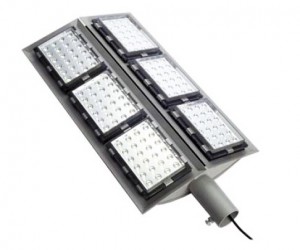Thermal property of LED refers to thermal resistance and PN junction temperature. Thermal resistance is the ratio of temperature difference in channel to its power consumption. Resistance and junction temperature are two important parameters which will impact an influence on LED High Bay photoelectric properties. There are two main methods for measuring LED junction temperature: using infrared microscope and micro-thermocouple to measure the surface temperature of LED chips. This value is approximately equal to LED junction temperature. Another method is to calculate temperatures of PN junctions according to the current-temperature relations. The later is more accurate than the former and has been widely used.

Reliabilities of LED Lights include electrostatic sensitivity characteristic, service life and environment properties. Electrostatic sensitivity characteristic is the maximum electrostatic voltage that LED can endure. Some LEDs have higher resistivity and longer distance between positive electrode and negative electrodes. When electrostatic charge accumulated to a certain amount on both ends, PN junction will be breakdown. In more serious conditions, LED will be destroyed directly. Thus electrostatic sensitivity test for LEDs is necessary before installing them onto lighting boards.
Service life of LED Projects is calculated though another parameter: light attenuation, need long-term tests. In order to obtain an average value, scientists need to choose LED samples randomly. Through long-term observation and statistics to estimate the average working life of LEDs.
Environment characteristics of the LED need to be tested in simulated conditions. Like high/low temperature impact test, humidity cycling test, salt spray test, dust test, irradiation test, etc.
All LED testing methods mentioned above have strict international standards. As for electrical property tests, final reports should contain curve graph for forward bias voltage, backward bias voltage, forward bias current and backward bias current in accordance with related standards. Tests for luminous flux should using 2π structures. Light intensity should be measured in conditions provided by CIE-127. Spectrum tests, thermal property tests, service life tests all have their own standards.
LED has been developed more than ten years in China, there still lacking of scientific and effective standards. Standards for LED testing methods can eliminate differences that exist in LED testing in different regions. In other words, it can help realizing the unification of the commodity. The testing results can truly reflect the overall level of Chinese LED industry.
